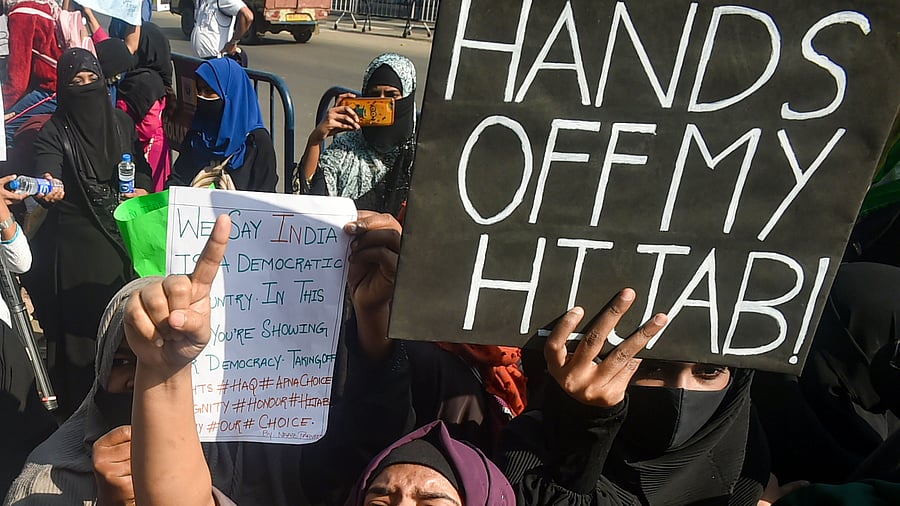
After two years, educational institutions are starting to function normally. Sociologists and educationists, particularly in developed countries, have discussed the disruption of studies due to Covid-19 and the strategies to accelerate learning. In India, the penetration of technology, widening educational inequality, and the urgency to distribute e-resources to marginalised students have not been discussed as much as cultural symbols.
School education has mainly three objectives in contemporary society - first, the transmission of knowledge through the prescribed subject and second, the socialisation of students, which involves the training of values, thinking, belief and behaviour. The third objective of school education is social sorting through which some go to higher education, well-paid jobs, while others become eligible to work with lower remuneration. The school develops its students' analytical skills to segregate facts and perception, theoretical perspectives, reasoning and scientific explanation, and the capability to question manufactured barriers through the transmission of knowledge. It paves the way for them to be free from ignorance and maximise talent. The curriculum structure determines this function of the school, and the State, socio-economic-cultural groups, play their roles.
The history of education shows that the State keeps trying to hegemonise the education system. The degree and nature of control over education may vary from one political system to another.
For example, in Nepal's case, where democracy replaced a monarchy, the schooling system also transformed. During the monarchy, schools had a picture of the king and followed rituals under his shadow. School textbooks carried a royal family picture next to the cover page. Chapters in the textbooks were dedicated to the royal family.
Political leaders contested the supremacy of the monarchy. Photos of the royal family had torn off the textbooks during the "people's war" that the Communist Party of Nepal (Maoist) launched. The monarchy ended in 2007, and a government order was passed to remove the royal symbols from schools and textbooks. The development of new textbooks started in 2008. The social science textbook of Class 9 consisted of a photograph of former prime minister Girija Prasad Koirala and Maoist leader, and subsequently, prime minister, Pushpa Kamal Dahal 'Prachanda' signing a peace agreement.
Despite disparities in education systems, there are some similarities in the character of educational institutions across the world. Dominant ideologies and groups influence a country's curriculum, textbooks, and examination systems. The State maintains its interest over the educational institutions through policies and financial provisions and usually allows all to attend in a legitimate mode.
School is a symbol of State authority and practices sovereignty on the campus. Through power, rules and practices, schools maintain dominance on the campus. On the other side, students resist the school authorities and the teachers. The power play of dominance vs resistance on campus helps the education system improve, and school shapes students' behaviour, belief, habits, and attitude in this process.
Students should not forget that school offers a collective identity to the students. Schools maintain a sense of togetherness using standard uniform and equal learning opportunities. Students demonstrate collective identity during inter-school sports and at other events. We versus others is not a discourse to have within the campus.
Undoubtedly, different groups in the society consider their cultural symbols as superior and natural and may display them in public. But, that does not mean schools should be driven by the forces hampering the collective identity of the students. A modern school system offers critical thinking, debating false perceptions, promoting objectivity, and gaining a broader worldview.
The State and constitution may define the rights of the school and the individuals, but the school should not elude the primary character of collectivism and commitments towards society. If schools fail their secular feature and favour one group over others by promoting cultural symbols, then the outcomes may not be encouraging in the long run.
There is much to be learned from the experience of Rwanda, where nearly ten lakh people got killed between April 7 to July 15 of 1994. Schools also played a role in fuelling tensions between two ethnic groups in Rwanda. After the massive violence, people realised the role of schools, teachers, textbooks in projecting a collective identity.
The Hijab-Kesariya row looks like an issue of political and gender dominance. No doubt at the heart of this issue is students seeking a way of upward mobility. Most students attending government schools accept learning in a pluralist environment.
The responsibility lies more on teachers-parents how they retain the collective identity of the students and the secular character of schools. Despite the temporary pressure, reinforcing the basis of establishing a modern school system should not be snubbed. Only rational thinking with a global perspective and empathy would keep education institutions relevant in the 21 st century.
(Sanjeev Rai is an educationist and founder of School of Open Ideas)
Disclaimer: The views expressed above are the author's own. They do not necessarily reflect the views of DH.
Check out the latest DH videos here: